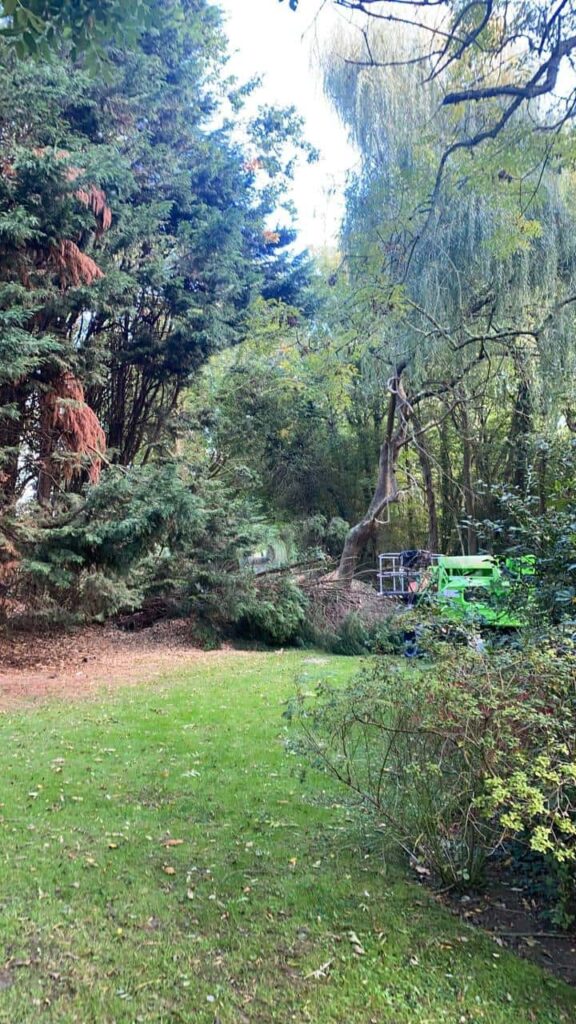Introduction: Trees are valuable assets that contribute to the beauty and ecosystem of our surroundings. However, there are instances when tree felling becomes necessary. In this blog post, Eye Tree Surgeons will explore the signs and reasons for considering tree felling, providing insights into when it may be the most appropriate course of action.
- Tree Health and Disease:
a. Severe Decay: Trees with extensive decay may become structurally compromised, posing a potential risk of falling and causing harm to people or property.
b. Fungal Infections: Certain fungal infections can weaken the tree’s structure, leading to decay, reduced stability, and increased susceptibility to pest infestations.
c. Advanced Pest Infestation: When pests such as wood-boring insects cause significant damage, compromising the tree’s integrity, removal may be necessary to prevent further infestation and spread. - Structural Instability and Hazardous Conditions:
a. Leaning Trees: Trees that exhibit a significant lean without corrective measures can pose a safety hazard, especially if located near buildings, roads, or high-traffic areas.
b. Cracked or Split Trunks: Trees with large, deep cracks or splits in their trunks may be structurally compromised and at risk of failure, requiring removal to ensure safety.
c. Branch Failure: Repeated instances of branch failures, especially during calm weather conditions, indicate structural weakness and the potential for further failures. - Invasive Root Systems:
a. Foundation Damage: Trees with invasive root systems can cause significant damage to nearby structures, including foundations, sidewalks, and underground utilities, necessitating their removal.
b. Proliferation of Suckers: Trees that produce excessive root suckers can become a nuisance and cause damage to lawns, gardens, and other nearby vegetation. - Land Development and Construction:
a. Clearing for Construction: When land is being developed for construction projects, tree felling may be necessary to make way for new structures.
b. Landscape Renovation: Tree removal may be required when undertaking landscape renovations, allowing for new plantings or reshaping the overall design. - Safety Concerns and Emergency Situations:
a. Storm Damage: Trees that have suffered severe storm damage, such as significant limb loss or uprooting, may need to be promptly removed to eliminate potential hazards.
b. Diseased or Dying Trees: Trees in advanced stages of decline, exhibiting extensive dieback or showing signs of imminent failure, should be removed to ensure public safety.
Conclusion: While trees are cherished for their beauty and environmental benefits, there are situations where tree felling becomes necessary. Eye Tree Surgeons can assess your trees’ condition, identify potential risks, and provide expert advice on when tree felling is the appropriate course of action. By recognising the signs and reasons for tree removal, we can prioritise safety and preserve the overall health of our surroundings. Contact Eye Tree Surgeons for professional tree care services and guidance in making informed decisions about tree felling.
Call us on 01379 773 584 or click here to complete our contact form and see how we can help with your tree’s needs.

